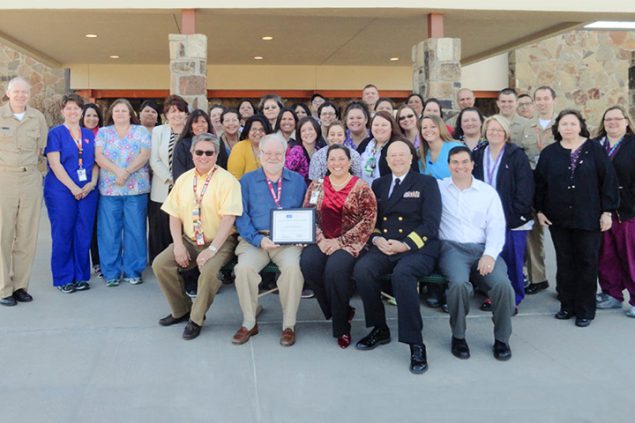Success Story: Pawhuska Indian Health Center Achieves Success for its Population
Pawhuska Indian Health Center, Pawhuska, Oklahoma (2013)
In previous rounds of the Hypertension Control Challenge, Million Hearts® established a benchmark of 70% hypertension control for applicants’ adult populations. This 2013 success story reflects the earlier benchmark.
The Pawhuska Indian Health Center (PIHC) serves American Indians in the northeast region of Oklahoma. This patient population faces disproportionately high rates of chronic conditions, such as high blood pressure (also called hypertension), heart disease, and diabetes, increasing the importance for clinicians to effectively treat patients. In 1 year, PIHC increased the hypertension control rate within its patient population from 66.7% to 73.2%. This achievement resulted from patient-focused improvement activities, such as putting into action electronic health records, team-based care, and support for medication adherence.
What They Did
Implemented consistent, strategic use of electronic health records (EHRs)
PIHC used iCare, a population management software tool, to manage patients with high blood pressure. iCare pulled information from PIHC’s EHR system, including lab results, helping the health care team identify patients who were due for follow-up visits.
- More than 2,400 adult patients in Osage County, Oklahoma, home to the Osage Nation, are served
- 33% have high blood pressure
- 40% are eligible for Medicaid

“It’s exciting to see how we are able to make a difference in our patients’ lives when everyone is united around the same goal.”
—April Gothard, health director and hypertension control advocate
Used team-based care models
PIHC used the Improving Patient Care program, a patient-centered approach supporting a strong collaboration among nurses, physicians, and patients. Each care team was assigned a patient panel. The team nurse assisted by communicating urgent patient needs. Other PIHC departments, such as dentistry and optometry, used the same EHR system and, when treating a patient with high blood pressure, easily identified and referred at-risk patients to the care team for follow-up.
Took action to improve medication adherence
PIHC’s primary care department worked closely with its onsite pharmacy to support medication adherence. For example, the health care team entered notes in patients’ EHRs, and pharmacists reviewed and adjusted medications as needed. Similarly, when patients came in for a pharmacy-only visit, the pharmacy staff reviewed patients’ charts to assess whether patients were due for a blood pressure check. If so, the pharmacists completed the check and, if necessary, referred patients to the care team.
Through the use of multiple strategic efforts, PIHC successfully increased its hypertension control rate from 66.7% to 73.2% between June 2012 and June 2013. This increase translated into an additional 38 adult patients with high blood pressure under control in 2013.
Advice for Others
For other health organizations striving to improve hypertension control, PIHC recommends
- Facilitating the sharing of information. PIHC’s EHR system ensures that all members of the health care team can readily access patients’ health information without delays caused by searching for details.
- Educating staff and patients about hypertension and shared goals. By including the patient in establishing the goal of hypertension control, the patient is involved and invested in working with the care team and celebrating successes.
- Collaborating with ancillary staff. Including other health care professionals, such as pharmacists and lab staff, provides a mechanism for consistent messaging with patients. For example, PIHC’s strong internal communication across primary care, pharmacy, dentistry, and optometry helped reduce the risk that patients might fall through the cracks and provided additional opportunities for blood pressure checks.
Learn More
The PIHC team faced challenges in getting patients into the office and helping them comply with lifestyle changes. To overcome these barriers and keep patients engaged and motivated, PIHC worked closely with local Osage Nation tribal programs to share consistent messages about the importance of hypertension control and overall health.
